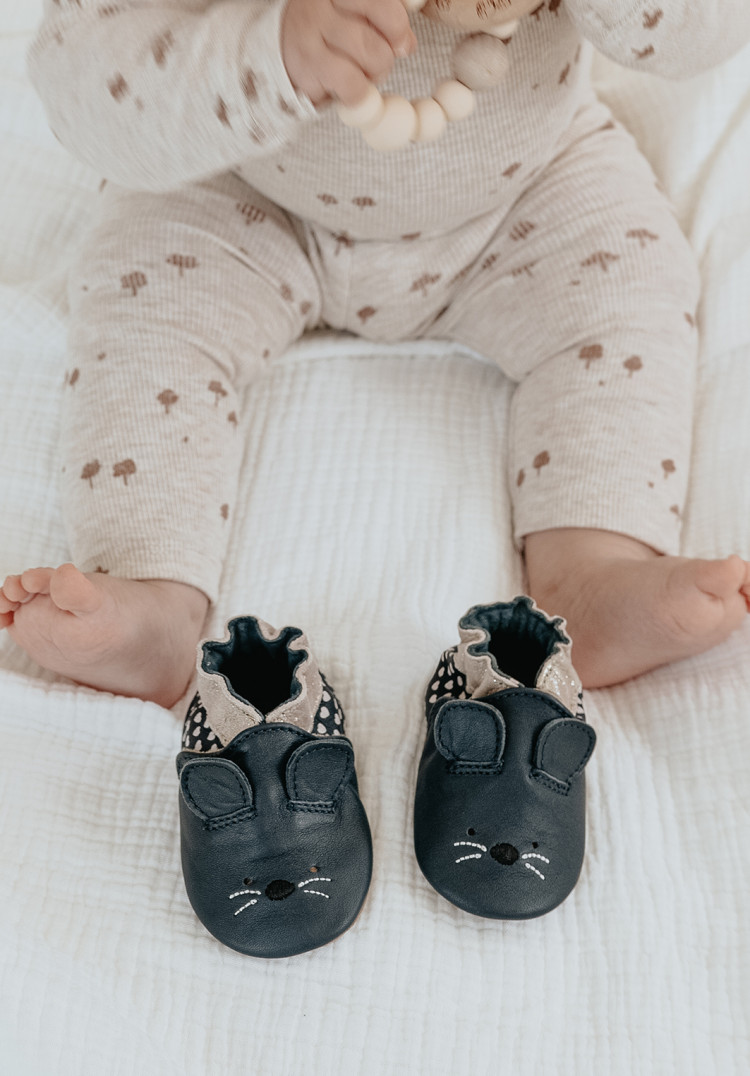| EU Robeez sizes | Age Months (M) and Years (Y) | Foot lenght (in cm) |
|---|---|---|
| 17-18 | 0-6M | 10,8 cm |
| 19-20 | 6-12 M | 12,1 cm |
| 21-22 | 12-18 M | 13,6 cm |
| 23-24 | 18-24 M | 14,9 cm |
| 25-26 | 2-3 Y | 16,3 cm |
| 27 | 3-4 Y | 17,5 cm |
| 28-29 | 4-5 Y | 18,9 cm |
| 30-31 | 5-6 Y | 20 cm |
| EU Robeez sizes | Age Months (M) and Years (Y) | Foot lenght (in cm) |
|---|---|---|
| 17 | 0-3 M | 10,3 cm |
| 18 | 3-6 M | 11 cm |
| 19 | 6-9 M | 11,6 cm |
| 20 | 6-9 M | 12,3 cm |
| 21 | 9-12 M | 13 cm |
| 22 | 12-15 M | 13,6 cm |
| 23 | 15-18 M | 14,3 cm |
| 24 | 18-24 M | 15 cm |
| 25 | 2-3 Y | 15,6 cm |
| 26 | 3-4 Y | 16,3 cm |
| 27 | 3-4 Y | 17 cm |
| 28 | 3-4 Y | 17,6 cm |
| EU Robeez sizes | Foot lenght (in cm) |
|---|---|
| 18 | 11,9 cm |
| 19 | 12,5 cm |
| 20 | 13,1 cm |
| 21 | 13,7 cm |
| 22 | 14,3 cm |
| 23 | 14,9 cm |
How should I correctly measure my baby's foot?
Foot gauge
Your child's feet grow very quickly. Little ones can grow a size every 2 to 3 months! For children over 3, it's around every 6 months.
That's why it's essential to take the exact measurements of your child's feet to ensure they are completely comfortable.
Robeez shows you how!
Print out the foot gauge and place your child's foot on it in the position shown. The heel must be perfectly aligned with the starting line.
Your baby must be standing up with their toes completely flat. This could make the difference between one size or another.
Once the foot is perfectly positioned draw round the outside of the foot with a pencil, still keeping the toes flat.
You now need to use the outline to select the precise size. A tiny discrepancy can make a big difference here too! If in doubt, choose the largest size.
How can I check that the shoes my baby is wearing are the right size?
If the inner cushioning is removable: simply take it out of the shoe and compare it to your child's foot.
You can also check the size by placing your child's foot against the outer sole of the shoe, edge to edge at the heel. There should be a minimum margin of 1.5cm between the edge of the foot and the edge of the sole.
A child cannot necessarily tell you whether their shoes are comfortable, especially if they are very young! But badly fitting shoes may have very negative consequences:
- Shoes that are too short or too narrow can constrict and damage the feet. Toes cannot move freely. The child may fall frequently. They may perhaps let you know how uncomfortable their shoes are by categorically refusing to put them on!
- Shoes that are too long or too wide will not support the feet correctly. The feet slide around inside and get too warm. The child finds it difficult to control their movements and falls.
